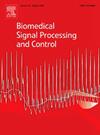Symmetric deformable image pairwise registration by optimizing neural fields network architectures for guaranteeing transformations consistency
IF 4.9
2区 医学
Q1 ENGINEERING, BIOMEDICAL
引用次数: 0
Abstract
In the registration task, the transformation should ideally output a deformation field with diffeomorphic properties, that is, the deformation field is reversible and smooth so that the topology of the image will not change during the transformation. However, the performance of existing registration methods in ensuring the smoothness and reversibility of the deformation field is still unsatisfactory. In this paper, a novel inverse consistency neural field (ICNF) method was proposed, which can guarantee the reversibility of the registration transformation and significantly improve the regularity of the registration deformation field. The proposed method is based on pairwise optimization and takes advantage of the powerful representational capabilities of deep neural networks to model the transformations between the joint symmetric estimation image pairs. Based on the different methods of generating deformation fields, the proposed method can either directly output forward and backward displacement fields, realized as displacement field deformable image registration (ICNF-disp), or generate forward and backward time-dependent velocity fields, and integrate these velocity fields to derive the deformation fields, known as diffeomorphic deformable image registration (ICNF-diff). To reduce the impact of interpolation errors in the generated velocity field on ICNF-diff registration performance, we propose a novel inverse consistent loss function for the velocity field. By imposing an inverse consistency constraint on the time-dependent velocity vector, the invertibility and topological preservation of the transformation are further ensured. Extensive experiments on a public Magnetic Resonance 3D brain scan dataset show that the proposed method guarantees invertibility of the transformation between image pairs while outperforming the state-of-the-art registration methods on registration regularity (ICNF-disp improved 86.03% and ICNF-diff improved 97.12%).
求助全文
约1分钟内获得全文
求助全文
来源期刊

Biomedical Signal Processing and Control
工程技术-工程:生物医学
CiteScore
9.80
自引率
13.70%
发文量
822
审稿时长
4 months
期刊介绍:
Biomedical Signal Processing and Control aims to provide a cross-disciplinary international forum for the interchange of information on research in the measurement and analysis of signals and images in clinical medicine and the biological sciences. Emphasis is placed on contributions dealing with the practical, applications-led research on the use of methods and devices in clinical diagnosis, patient monitoring and management.
Biomedical Signal Processing and Control reflects the main areas in which these methods are being used and developed at the interface of both engineering and clinical science. The scope of the journal is defined to include relevant review papers, technical notes, short communications and letters. Tutorial papers and special issues will also be published.
 求助内容:
求助内容: 应助结果提醒方式:
应助结果提醒方式:


